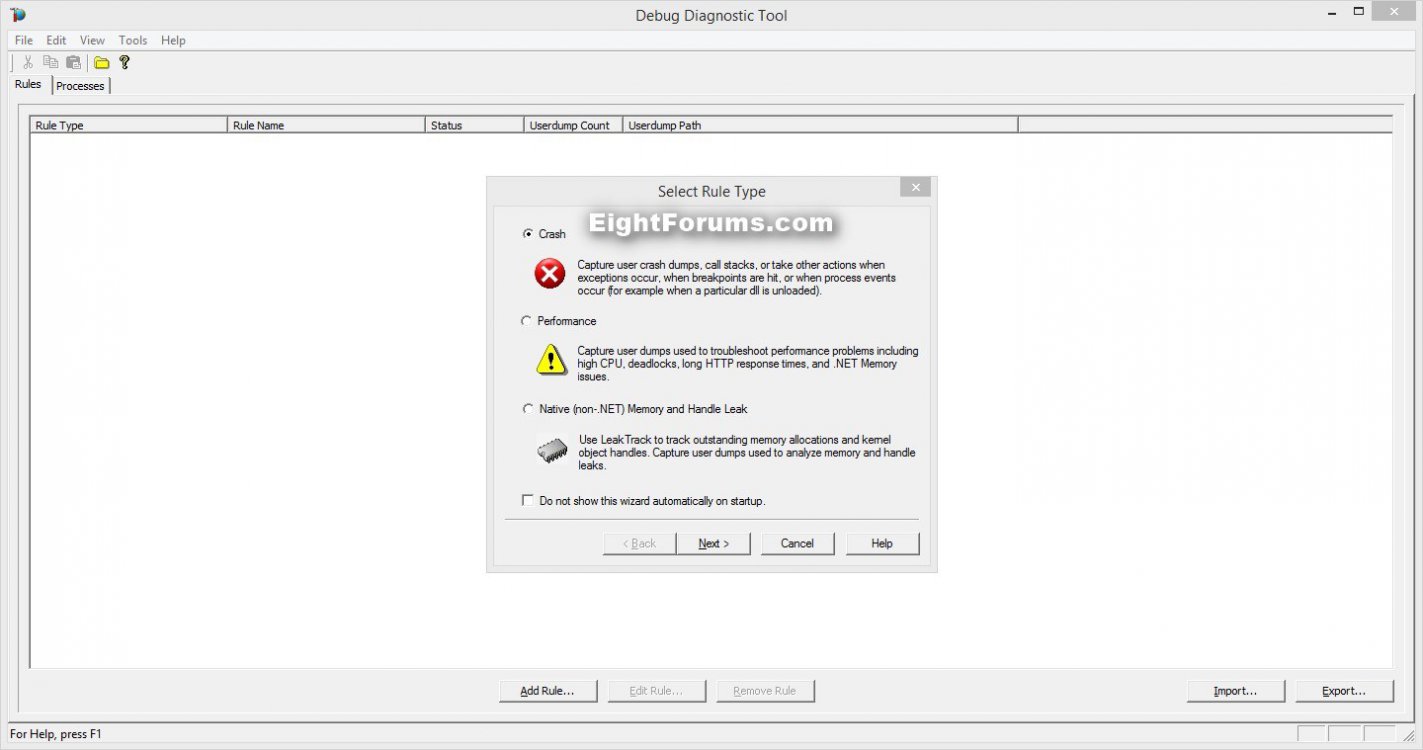

- MICROSOFT DEBUG DIAGNOSTIC TOOL TUTORIAL FULL
- MICROSOFT DEBUG DIAGNOSTIC TOOL TUTORIAL FREE
- MICROSOFT DEBUG DIAGNOSTIC TOOL TUTORIAL WINDOWS
AUTOEXEC.BAT - Not required for Windows 9x, but it is included for compatibility, path: root.CONFIG.SYS - Not required for Windows 9x, but it is included for compatibility, path: root.Identifying recent changes to the computer environment from.Having customer reproduce error as part of the diagnostic.Eliciting problem symptoms from customers.Diagnostic tools, utilities and resources.

Utilities and tools may include the following: The appropriate steps needed to resolve the problem. Given a diagnostic scenario involving one of these utilities or tools, select The final report will detail all outstanding memory allocations.3.2 Recognize when to use common diagnostic utilities and tools. If your windows service is consuming too much memory instead of crashing, configure the collector to watch for memory leaks: Hopefully you will find a telltale sign to help you identify and fix your problem.Īlso Find Memory Leaks in your Windows Service (This is not surprising though – that is what we did to force the crash in our testing!) For example, this stack trace tells us that our service crashed while handling a button press. Thread call stacks may be particularly useful. A new entry should show up in the lower pane.Īnd click the Start Analysis button to get going! After a period of “thinking”, the application will open its report in your browser:
MICROSOFT DEBUG DIAGNOSTIC TOOL TUTORIAL FULL
Here we can see that 1 crash has occurred and been captured (with the full path to the dump file noted on the right): When the service crashes, DebugDiag will record a dump file and increment the Userdump count column. You don’t have to make any changes on the Select Dump Location screen either – just make a note of where the dump file will be saved.Īnd finally, let’s activate the rule now and click Finish:Īfter a few seconds, the tool will be monitoring your windows service for crashes: Click Next.Īlmost there! Leave the Advanced Configuration settings at their default values and click Next to continue: We chose “AA MyService”, a windows service we developed to test our Service Protector application. Select the service you wish to debug from the list. Next, select the A Specific NT service option: We’ll select Crash for this tutorial and click Next to move on. From here, you can specify to monitor for crashes, leaks, and even performance-related issues. The Debug Diagnostic Tool window should come up and you will be launched immediately into setting up a new “rule” describing what to watch for. Start – the application that monitors and collects information from a running process or service. Setup should be quite straightforward, with the usual prompts for a folder, etc.įrom Windows Explorer, navigate to the folder where DebugDiag was installed (C:\Program Files\DebugDiag by default). Using the Debug Diagnostic Tool on your Windows Serviceĭownload the Debug Diagnostic Tool from. You can use this information to narrow down the problem in your own code, or pass it on to the folks who developed the failing service for their expert analysis.
MICROSOFT DEBUG DIAGNOSTIC TOOL TUTORIAL FREE
This free desktop application, nicknamed DebugDiag, will monitor your windows service process and create a “dump” describing the state of the application when it crashed (or started using too much memory). Our AlwaysUp and Service Protector utilities go a long way to diminishing the effect of these insidious failures, but using them is no substitute for finding and fixing a problem at its root.ĭevelopers looking to diagnose failures in their windows services should consider using Microsoft’s Debug Diagnostic Tool. Crashes and memory leaks are particularly offensive when the occur in windows services – applications designed to run unattended, 24/7 in the background to perform important tasks.


 0 kommentar(er)
0 kommentar(er)
